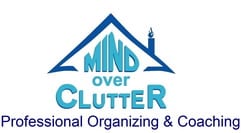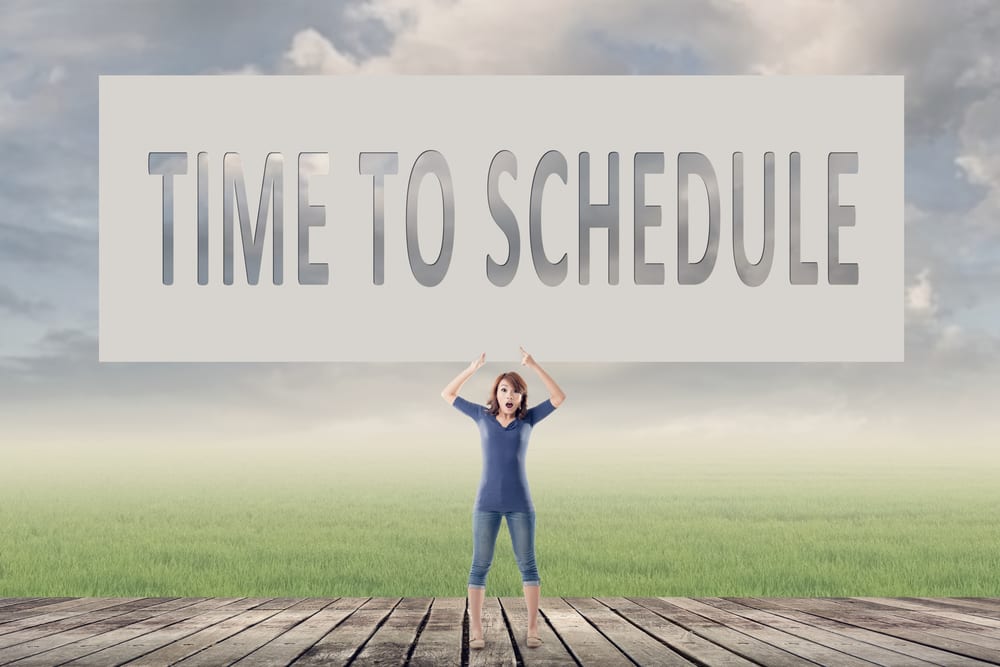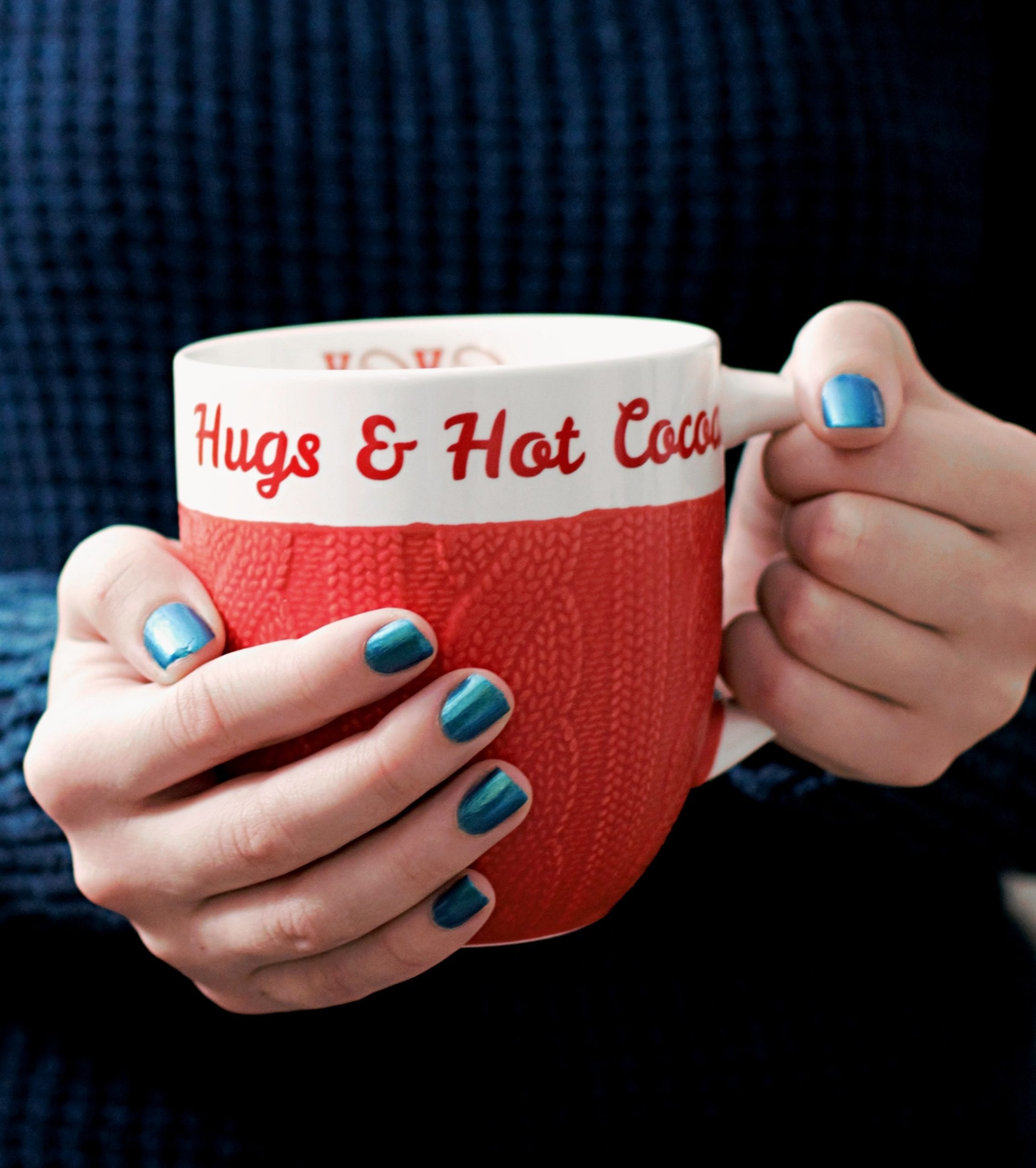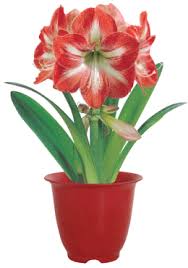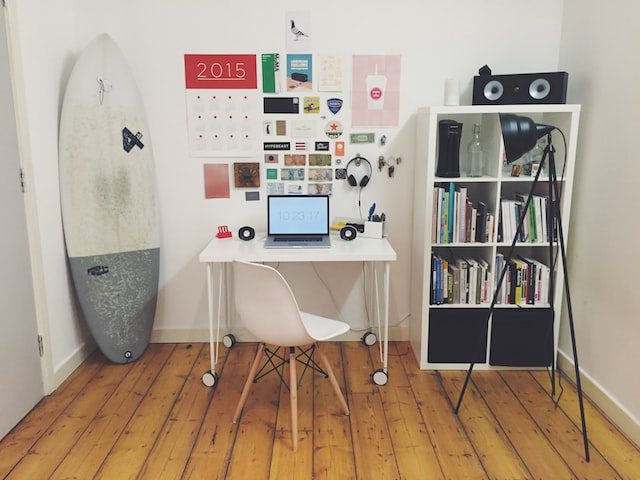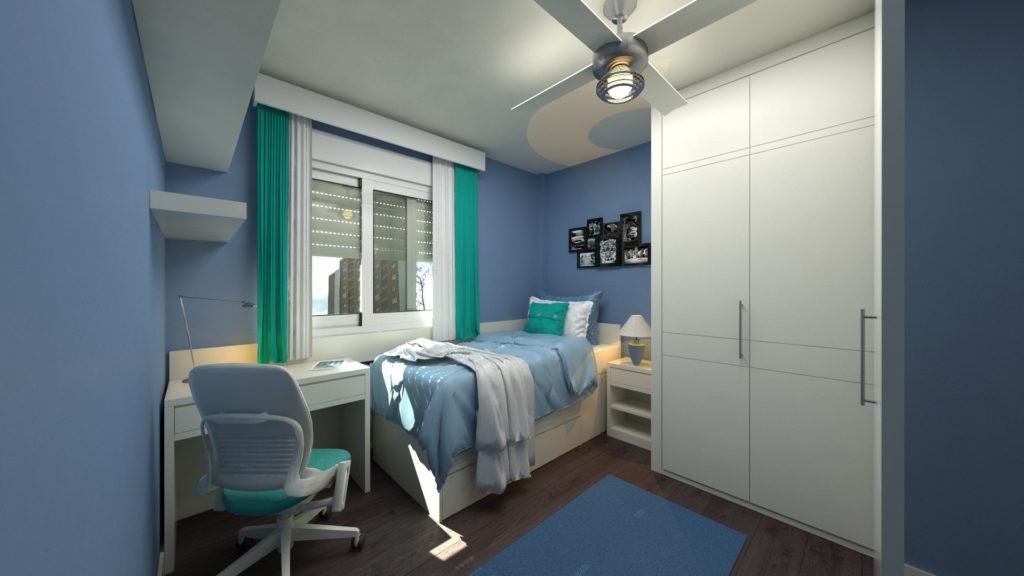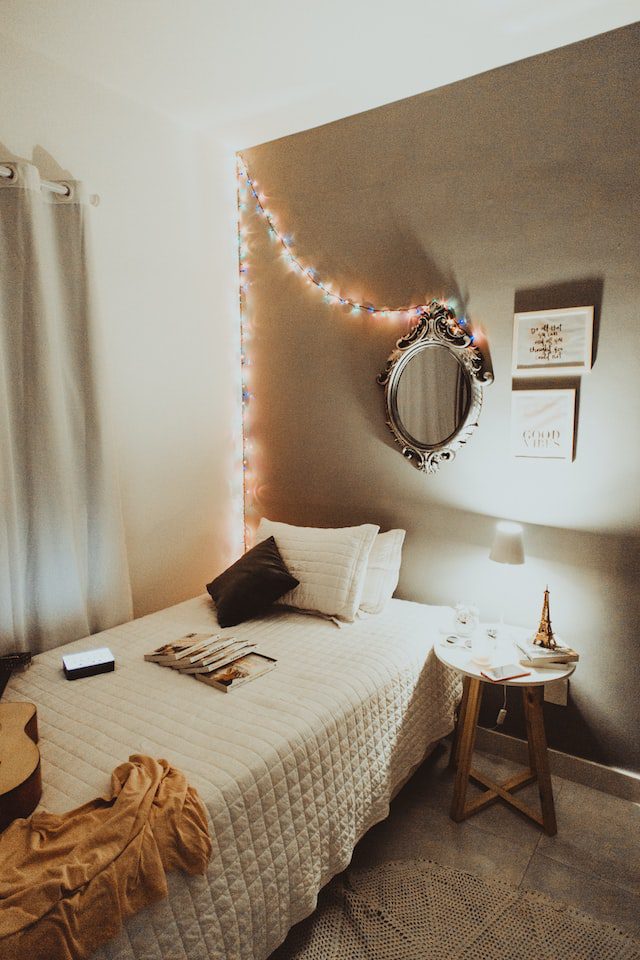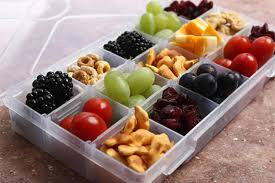Latest Blog Posts
Getting over procrastination takes action. Of course that is easier said than done. Today I’m going to share a simple three-step process with you that will help you get started and get more done than you ever thought possible.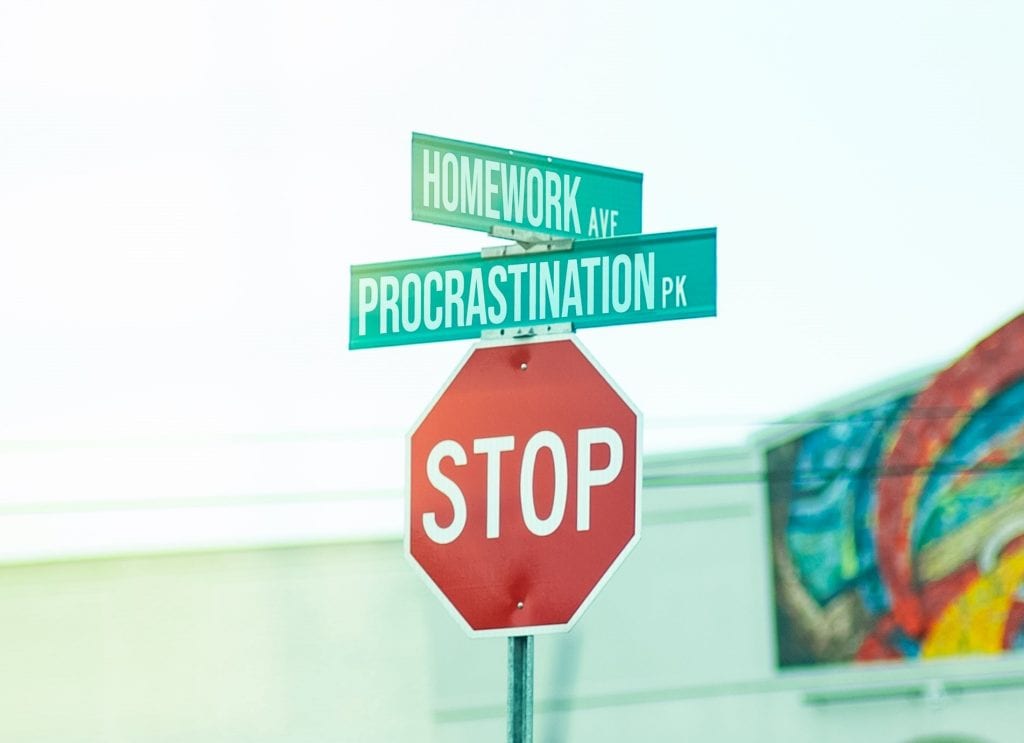
Set a goal
It all starts with a goal. You have to know what it is you want to accomplish. If you don’t know what your goal is, it’s hard to know what you should be doing first or what you should be doing right now to move in the right direction. So what do we do instead? Anything other than the work we know needs to get done.
Your goal is simply to put what you know you need to get done into words. A good goal has defined parameters and a set deadline. It doesn’t have to be complicated. Here’s a simple goal we all strive to accomplish. We have to file our taxes by a specific date. You have a pretty good idea of what paperwork you need, what forms you need to fill out, and where you need to turn them in. You also know what your deadline is. In other words, you have a well-defined goal when it comes to filing your income taxes. And yes, I realized most of us still procrastinate when it comes to this particular task. That’s why the remaining steps are just as important as the first one. For now, I want you to think about one thing you need to get done and turn it into a goal.
Write it down
Write it down. I don’t care if you find a random scrap of paper, use your favourite notebook, or type a note to yourself on your phone. The important part is that you put your goal into writing. This does two things. First of all, it helps you clarify what your goal is. You have to get pretty specific when you try to put what you want or need to do into words. Secondly, writing it down gives you something to look back on. It serves as a reminder and as a tool that you can use when you are tempted to procrastinate.
Set an appointment with yourself
Last but not least, it’s time to get started. That’s often the hardest part, isn’t it? You’re tempted to skip your workout until you lace up your shoes and get started. Once you’re off and running, it’s much easier to keep going. Once you have your goal written down, think about something you can do right now to move you in the right direction. Go do that. Then come back and do something else. Each morning, start by looking at your goal and challenge yourself to take action. Before you know it, you will have made some serious progress. And you’re starting to beat procrastination.
A three-step process to stop procrastinating: set a goal, write it down, schedule time. You can do it Click To Tweet
Need help setting goals? Book a 30-minute complimentary virtual appointment and let me help you get started.


Contact her at julie@mindoverclutter.ca
Click here to learn more about her online course Create an Organized Home.
Twitter – Facebook – Facebook group Organizing Mind and Space
January is usually the time for goal setting, however it can be done at any time. You might want to set goals for a month or quarter of the year or the entire year. Take a moment to think about things you might want to improve in your life. Before you stop reading I want to present three ways of setting goals. Decide which one will work for you.
Pick one area and improve it
I am a person who is motivated by a fear of failure, I don’t want to fail, so I am cautious. My system of setting goals is to look at my business or life and see where I think could be improved, and what types of skills I need to improve so my business or life will improve. I pick one thing and then work on it all year to get better at it. For example, I wouldn’t say I liked social media so I decided to start working at becoming better at it and setting up a system that works for my day and philosophy about the importance of social media. I picked a platform, got good at it and continued to add more and more platforms. I organized workshops on Twitter and Google Business, I listened to webinars. A vague plan works for me because I am self-motivated, I am not a procrastinator. I read an interesting article by Ravi Venkatesan about the importance of learning new things, “What skill will you acquire this year? What new activity will you start?” Perhaps learning to play a new instrument, going on an adventure or taking on a new role- anything that causes you to move out of your comfort zone. Pick a goal that challenges you at about a level 5 out of 10. If you are too fearful you will panic and not start. Choose a goal that challenges you and allows new neural connections to form. That would be a good goal for this year.
S.M.A.R.T Goals
That vague framework of deciding what you want to do to improve your business or life would not for everyone. We are all different. So there is a goal-setting system called SMART. You pick a specific goal with measurable outcomes, that are achievable, realistic, and have timely outcomes. When you use this system of goal setting it gives you a step by step plan to follow. For example with my social media goal, if it had been a SMART goal, would be something like
I will learn how to post on Facebook,
S (specific) – I will post 3 times a week, one original content, one picture, and one comment on someone else’s post
M(measurable) – Did I post 3 times/week?
A (achievable) – I have that much time in my week
R(realistic) – If I only have to do it 3 times a week I will not become frustrated and stop
T(timely)- I have 3 mornings a week when I can do these posts. Tuesday, Thursday and Saturday
This will work for some people who like to have a step by step plan and follow it. It can cause problems if people stop following the plan. They may give up and not start again or some people may feel like it is too rigid. Set your goal and keep trying to do it, that is the only way you will get better at it.
Turn desire into intention
I read an article that reveals a simple trick that doubles the chance for success in obtaining goals. Earlier I commented on what motivates me. Sometimes we say, I need to motivate myself to get working on…., In this article, it says motivation is not the key to reaching your goals it is intention.
A study in the British Journal of Health Psychology divided 248 adults into 3 exercise groups.
- Group 1 had to record how often they exercised during a 3 week period
- Group 2 was told “ most young adults who have stuck to a regular exercise program have found it to be very effective in reducing their chances of developing coronary heart disease. ” ( motivation to exercise) and had to record how often they exercised during a 3 week period
- Group 3 recorded when and where they would exercise (intention to exercise), they were given the same motivation as Group 2 and they recorded how often they exercised during a 3 week period
Results
- Control group 1 38% exercised at least once per week
- The motivated group 2 35% exercised at least once per week
- The intentional group 3 91% exercised at least once per week
We all have some level of desire or willpower or motivation but what turns desire into action is a written plan for implementation. When you have a goal to do something, record when and how you will do that behaviour or activity. It will be the environment that triggers you to do your new behaviour or activity and not motivation or will power. This year I used the intention method to become better at making videos.
- Every morning for 30 days I made a video of 1 minute or less and sent it to a friend. It was not edited and most of the time there was only one take, no practice videos. The when of the intention was at 8 am and the who of the intention, was a friend who expected to receive a video.
- Step 2 was 30 days of videos on Instagram Stories. It was usually at 8:15 am but sometimes it was at another time in the day when I was getting dressed up for a meeting.
- Step 3 was 30 days on Facebook Live.
The level of challenge increases with each step. It is a great way to become better at doing video. How would you use this system of setting goals?
These are just 3 systems
- Having an all-encompassing vision or
- Setting SMART goals or
- Intentionally decide when you will do something and block off time
that can help you establish new behaviours to accomplish a goal for 2024. Pick the one that works for you.
Set goals to help you move out of your comfort zone, learn new skills and grow. Click To TweetWhen you hire me, I don’t have the Mind over Clutter organizing system, implement it and then be done. I discuss what is working for you and how you do things so I can find solutions that work for how you think, feel and your lifestyle. I want you to accomplish your organizing project so you meet your goals.
Now I would like to hear from you:
What strategy from today’s post are you going to try first?
Maybe I didn’t mention your favourite way to set goals.
Either way, let me know by leaving a comment below right now.
Want help in 2024 to get your Mind and Space Organized, join my Facebook group full of free tips


Contact her at julie@mindoverclutter.ca
Twitter – Facebook –Facebook group Organizing Mind and Space
Click here to learn more about working with a Professional Organizer.
Reading time – 3 minutes
Here are some tips for holiday planning to make a H A P P Y season.
Holiday Decorating
You may be feeling overwhelmed or disorganized by the number of items on display in your house. Try putting the non-seasonal items away to reduce the number of items on display.
Think about decorating with fewer items but larger size items. This means there are fewer items to pack and unpack which will reduce the amount of time you need to prepare your home.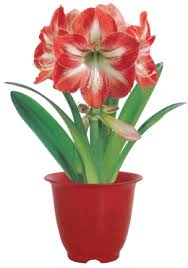

Take advantage of using linens to cover tables or end tables and seasonal pillowcases to cover throw cushions to decorate couches. They may be less bulky to store and cover a larger area making your home seem completely decorated while taking less time to get the job done.
Use items that self-destruct so you don’t need to pack them away, flowers, paper towels, and tissue boxes all give your house a festival spirit but don’t need to be packed away and stored.
When you go through your decorations part with the ones you no longer need early in the month so thrift stores have an opportunity to sell them and so they don’t need to store them until next year. Some stores don’t take holiday décor in January and then you will be stuck storing them for another year.
What tips do you have for a H.A.P.P.Y holiday season? Click To TweetAccept Help
Acknowledge that you are feeling overwhelmed and stressed and when people offer to do things say yes. We all love to help people so let people feel good about themselves by allowing them to help you.
Parties may be larger again this year. It is a good time to try a new way of doing things. Allow people to help clean up dishes on their way out the door. Be ready for it. Have a place to put cutlery to soak. Have a container for compost. Put glasses or coffee mugs directly into the dishwasher.
You may need to accept help with setting up a hybrid party. Put one of those “youngsters” in charge.
Planning is important
Use a to-do list. Divide your to-do list into to pick up, to e-mail, to call, to buy then you can plan your day and route to get things done and not be driving back and forth all over town. The trick here is to look at the list and use it not just make it.
Keep your plans from year to year, record your menu, grocery list quantities and timelines. Each year you can reuse, revise and update the plan. This year’s plan may need a lot of updating from the previous years.
People and relationships are the reason for the season
Some people like to send cards in December. I keep my cards and addresses and stamps together. When I am going somewhere where I will be waiting I pick up the supplies and take them along and write my cards. I have done it in many places including my van. I usually leave replies to someone who has sent me a long letter until January.
Use your spare moments to write cards
You may want to send e-cards. Jacquie Lawson is the site I use. If you want to automate the card-sending operation there is a company called Send Out Cards. You can attach a gift to the card.
Gift-giving may be an area where you are developing a system. Have you thought about Clutter-free gift giving?
Consider the idea of a gift that self-destructs. See my post on Clutter Free Gift Giving .
Yes you can
Being organized is more about an attitude than how something looks. It is not about having the perfect home, party or gift. It is doing the best you can with the time and resources that you have. The only way to get better at organizing is to practice. It is a skill that can be learned and with practice, it becomes easier and easier. This year’s challenge may be technology. Ask for help and practice ahead of time. You might want to play Yahtzee at your gathering. Try using these 2 sites.
Score sheet http://www.playonlinedicegames.com/scoresheet/yahtzee
Dice roller https://www.elversonpuzzle.com/yahtzee-dice-roller.html
Julie Stobbe is a Trained Professional Organizer and Lifestyle Organizing Coach who brings happiness to homes and organization to offices, virtually. She has been working with clients since 2006 to provide customized organizing solutions to suit their individual needs and situation. She uses her love of teaching to reduce clutter, in your home, office, mind and time. If you’re in a difficult transition Julie can coach you to break-free of emotional clutter constraining you from living life on your terms. Get started by downloading Tips for Reorganizing 9 Rooms.
Contact her at julie@mindoverclutter.ca
Twitter – Facebook – Facebook group Organizing Mind and Space
Click here to learn more about working with a Professional Organizer
Black Friday and Cyber Monday are fast approaching. There may be some deals you can find. Ask yourself:
- Will you be spending a lot of your valuable time looking for that special holiday deal?
- Will you end up purchasing things that cause clutter for you or a friend?
- Will you overspend on your budget?
- Will you be happy with your purchases?
Fun Facts
Here are some fun facts. The term Black Friday first became used widely in the 1990’s and refers to retailers reaching profitability or in the black – black ink, as opposed to losses that were originally recorded in red ink.
Black Friday sales declined only once in recent years. It was 2008 during the Recession. Only 263,820 seasonal workers were hired in 2008 – a staggering low compared to the record 764,750 workers hired in 2013.
Here’s an idea you don’t have to wait in line for.
Mind over Clutter.ca has 3 hour packages designed to help with any number of tasks in the home and office. Considering purchasing an
- Income Tax Receipt Organizing Package
- Holiday Cleanup Package
- Streamlining Your Office Package.
- Virtual Organizing Packages
Packages can be designed to fit the individual needs of the person receiving the gift. Purchase your gift package for $195.00. Contact julie@mindoverclutter.ca to purchase your clutter-free gift of time.


Contact her at julie@mindoverclutter.ca
Click here to learn more about her online course Create an Organized Home.
Twitter – Facebook – Facebook group Organizing Mind and Space
Reading time 5 minutes
There are many considerations when trying to purchase the perfect present. Sometimes the person has everything. Some people may feel that they have enough stuff and they don’t want to have to decide how to store more items. Some people feel that they need to keep everything they are given whether they need it or like it or can use it. They are afraid of hurting the giver’s feelings. It may feel like an impossible mission. Consider the idea of a gift that self destructs.
Give tickets to an event
Sporting, theatre, art gallery exhibits, or musical events. Most of these types of events have virtual or live performances. Give them tickets so it won’t be a gift card that they file or lose. Most performances will allow tickets to be exchanged for a different date. You can support your local community by purchasing tickets to a little theatre production, or concert. Give them the gift of entertainment.
Rent a sports venue
It can be an hour of ice time, indoor soccer, indoor tennis, indoor pickleball and indoor golf. This type of gift usually gets people together to socialize and be active. It is a gift of physical and emotional health.
Give an experience as a gift then there is nothing to store Click To TweetLessons
You can give lessons to a person. Art lessons, wine tasting, golfing, home improvement, music, craft, beading, the ideas are limitless. Many lessons are delivered virtually and in person. Goggle _______lessons. You fill in the blank It can be one lesson or a group of lessons. You can do it as a group or a person can do it solo. Give the gift of a new experience.
Food
Give a gift of a meal, prepared by you for them on a mutually agreed date. You may want to give them a batch of muffins every month or whatever their favourite food is. People enjoy receiving homemade Christmas cookies or a fruit plate. You can go online and search COOKIES in a Jar. The recipient of the cookie mix adds water or milk and bakes the cookies. Give the gift of sharing your time with others.
A Service
Someone may enjoy being relieved of performing a tedious job. Arrange for a cleaning service, car detailing, professional organizer, snow removal, and lawn care. Give them the gift of time for themselves.
Charities
There are many charities that can benefit from donations. Select a charity and make a donation in the name of the person. Look at one aspect of the person’s life and try to find a charity that represents their interests. Give them the gift of generosity.
Give the gift of Fun
One year we rented a hot tub for a week. Another year I bought rocket kits for everyone, we built the kits and shot off the rockets. Easy enough to do with social distancing.
Give the gift of memories
This year may be the perfect time to collect family photos and make a calendar. There are many online sites you can use to make the calendar. At the end of the year, you can let it go and make a new one. Give them the gift that keeps on giving.
Here are a few gifts that are clutter-free, personal and thoughtful and the ideas are endless. Don’t let time stop you from creatively finding the gift you want to give.
Share your idea in the comments


Contact her at julie@mindoverclutter.ca
Click here to learn more about her online course Create an Organized Home.
Twitter – Facebook – Facebook group Organizing Mind and Space
From now until January there are many celebrations. During the holiday season expectations are raised. The food needs to be perfect, the gift needs to be thoughtfully purchased, the house needs to be tastefully decorated, and everyone needs to be happy all the time. Record your expectations for the season. Everything you can think of. Look through your list and decide on a plan that makes each expectation manageable for you. If your expectations align with practicality, this holiday will be less stressful and more fun.
Planning Food
Could you:
- Cook ahead of time and freeze the food
- Plan a potluck with everyone contributing
- Buy your holiday baking
- Simplify your menu, prepare fewer items
Gift Giving
Gift Giving
Could you:
- Reduce the number of people you buy for
- Draw names so everyone gets one gift
- Set a price limit on the value of the gift
- Plan an experience instead of buying a gift: go to a play, go out for dinner, and go to a movie
If your expectations align with practicality, holidays will be less stressful and more fun. Click To Tweet
Decorating
Could you:
- Put out fewer items
- Use more oversized items to make the space look decorated instead of using lots of small items
- Decorate with flowers; you don’t have to pack them away when the season is over
Be Happy
Be Happy
Could you:
- Plan your schedule so you don’t get over tired
- Plan downtime so each member of the group can spend time alone
- Plan things you like to do, not have to do
- Plan to exercise and get fresh air
Can you learn to ask for help and accept help?
Can you learn to ask for help and accept help?
Virtual organizing allows me to support your organizing projects by providing planning, coaching and mentoring while both remaining safely at home Book a 30-minute complimentary virtual organizing assessment. https://mindoverclutter.as.me/virtualorganizingassessment


Contact her at julie@mindoverclutter.ca
Click here to learn more about her online course Create an Organized Home.
Twitter – Facebook – Facebook group Organizing Mind and Space
Reading time a-5 minutes
Judith Kolberg founded FileHeads, a professional organizing company, in 1989 and has been a member of the National Association of Professional Organizers (NAPO) since 1990. She formed the Institute for Challenging Disorganization and has served as its director for seven years.
Judith is the author of Conquering Chronic Disorganization, co-author with Dr. Kathleen Nadeau of ADD-Friendly Ways to Organize Your Life, and Organize for Disaster: Prepare Your Family and Your Home for Any Natural or Unnatural Disaster and Getting Organized in the Era of Endless.
- Hoarding disorder has been included in the new version of the Diagnostic and Statistical Manual for Mental Disorders. How has your expertise in working with clients with hoarding disorder influenced your ideas about mental wellness?
I love that you use the term ‘mental wellness’ instead of ‘mental illness’. As an organizer, I’m convinced that good psychotherapy is essential to the mental wellness of a person who hoards. A safe place to talk about what kind of life one wants to lead, how the emotional issues of loss, trauma and grief interplay with excessive saving and acquisition, and handling stress are key. Psychotherapy via Zoom, online individual and group, on-site, and peer-led support would be really handy in many hoarding situations rather than in a clinical, office setting.
- When working with a hoarding client or their family,
what is one common motivation obstacle and a strategy for overcoming it?
An obstacle to motivation is the fear of discarding the person’s possessions to the landfill. Reassurance that this will not be so is essential, but the age-old issue is will this promise backfire. Will the people charged with sorting and discarding and reducing the hoard be thwarted by “You said my stuff would not be thrown out?” If the person who hoards sees that there are good “pickers”, organizers who take the time to pull out the “good stuff” and load it into lots of clear, labelled containers that helps. Deciding on a specific individual recipient for the excess stuff also helps, as all the shoes go to my brother-in-law. Specific charities also help – all the stuffed animals to the Red Cross for children of natural disasters, all the pet stuff to the pet shelter, and all the unused toiletries to the women’s shelter. I take the time to discuss my entire process with the family.
- As a speaker, author, and trainer, you’ve been helping clients and families learn
strategies to help people with ADD and ADHD get better organized. In what ways have those strategies changed from when you started studying in this field to now?
The “how” has not changed much even though the “why” is better and better understood. I would say that providing strategies to cope with technology, devices, the Internet black hole, and digital distractions is the new frontier. Ironically, helping ADDers to use these very same things to their advantage is also new.
- For those who are especially challenged with ADD, what 2 strategies are most effective?
We have to get better, as organizers, at helping people with ADD manage their tasks and time. One strategy is for the organizer to be the time estimator. It’s great if that skill can be transferred and it often can by example, but there is no harm in the organizer actually being the person who helps the ADD client estimate how long a project or a task will take and accounting for it in scheduling. Another strategy is to think of creative ways for a person with ADD to capture tasks on the run. That might be post-it notes, voice mail notes, texting oneself, sending yourself emails, or using apps that convert voice to text or text to voice.
- What has been your biggest personal challenge around chronic disorganization?
My disorganization is centered on directions, getting from place A to place B without getting lost. I use voice GPS and that has been absolutely dreamy. I’m told directionality issues are part of my brand of dyslexia. Lots of little spatial challenges thwart me. I can’t for instance, look at my PowerPoint, advance the slides, and speak at the same time. I have to use index cards, even after all these years.
Judith Kolberg has written many valuable resources and more resources can be found on the website of the Institute for Chronic Disorganization.
What is the most difficult problem you have encountered helping someone who is chronically disorganized? Let us know so we can help.
Along with other wonderful bloggers, I have been selected by the Feedspot panellists as one of the Top 15 Canadian Organizing Blogs on the web. Learn more about all of us. https://blog.feedspot.com/canadian_organizing_blogs/?feedid=5584279




Contact her at julie@mindoverclutter.ca
Reading time – 10 mins
It’s back-to-school time! If you entered a university or college this year, you may be living in a student dorm room for the first time. If you plan to do your best this semester, you should ensure you have a productive study space in your dorm room! Now is the time to start thinking about how to organize your dorm room for maximum productivity.
You may be thinking, “How can I establish a pleasant and effective study place that exudes creativity without overwhelming the room?” Finding solutions that work for you and your limited space is critical. What’s keeping you from getting organized? Will there be enough lighting in the room? What can you do to make this room seem more inspiring? These are all critical considerations to ask yourself when setting up a study place. Are you ready to learn how to make a productive study space in your dorm room?
Maximize your available space
You should first figure out how to make the most of the limited space in your dorm room. You must ensure that you are making the most of your limited space since studying in a cramped or cluttered room won’t be productive. You may use several space-saving tactics and ideas in your dorm room to create the illusion of extra free space.
One method to do this is first to declutter. Remove any large items, such as a bookcase, to create room for a study desk. Instead of a large bookcase, build open shelves on the wall. It enables you to make extra room while still having adequate storage for your books and personal effects. However, if you are missing space for some of your necessities, Centennial Moving can help by renting you the needed storage. A storage unit can also be handy when moving into or out of your dorm. At the end of a semester, it may be more cost-effective to store your items than to move them back home.
Everything should serve numerous functions
When you live in a tiny place, you must make the most of everything you own. Everything in your dorm should serve many tasks. Instead of a regular table near the bed, use an ottoman or cabinet with drawers and storage that can hold a bunch of stuff. Don’t simply use a table to set your laptop on; instead, choose a desk that takes up the same amount of room but has more storage.
Bed lifts are handy for dorm room dwellers if you do not have a bed loft. Bed lifters are placed on the bottom of the memory foam mattress or beneath bed frames to raise it a further six inches. The wonderful thing about this is that you can now utilize the wasted area under the bed as storage. Another benefit of bed risers is that they have AC plugs built directly into them, giving you a greater choice in where you place the bed. There’s no need to worry about a hidden outlet buried under the bed you can’t reach.
Instead of studying in bed, study at your desk
When you have 30+ pages of your textbook to read, your bed appears quite attractive. Unfortunately, many students tend to doze off in bed. Unless you travel to the library or a study group outside your dorm room, try to accomplish all your studying, school work, and reading at your desk. It’s easy to zone out or fall asleep when studying in bed, particularly if you’re reading boring or too technical stuff. Relocating your textbooks or laptop away from your bed will organize your dorm room for maximum productivity. Bringing textbooks or a laptop into bed sends confusing messages to your body, and studies suggest that using technology in bed may harm your sleep quality.
Reduce Distractions
Is your neighbour’s music blaring across the hall? Or maybe you hear people talking just outside your door? If so, why not invest in a set of noise-cancelling headphones? Depending on what you find most comfortable, you may choose between over-ear, on-ear, and earbud models. It’s also a good idea to get a model with lengthy battery life so you can remain focused on your studies all day. Furthermore, noise-cancelling headphones are available in various price ranges, so you’re likely to find the right set.
Do you find yourself browsing social media during your study sessions? If this is the case, try designating particular periods of the day for texting or accessing the web. For example, you will get 10 minutes of phone time for every hour spent studying. Furthermore, lock apps may block you from using particular apps on your phone for a set amount of time. If you have trouble maintaining attention, there are many ways of organizing your life. You will be able to focus on your work without being distracted by social media, games, phone calls, or messages.


Try moving your phone out of your line of sight and setting it to Do Not Disturb mode for less distraction.
Introduce personalization
Adding a touch of personalization to your dorm room is also crucial. Your room should be functional and a representation of your personality. This doesn’t mean cluttering your space with unnecessary items but strategically placing a few pieces that make you feel at home. For example, hanging a motivational poster or having a desk photo of your loved ones can provide much-needed encouragement during stressful periods.
Invest in good lighting
One element often overlooked in dorm rooms is proper lighting. While maximizing space and reducing distractions is essential, so is ensuring that you have adequate light. Poor lighting can strain your eyes, especially during extended study sessions. Invest in an adjustable desk lamp with LED lights, which provide bright illumination without consuming too much electricity. If your dorm room doesn’t get enough natural light, consider light therapy lamps or bulbs that mimic daylight, improving concentration and mood.
Prioritize ergonomics
Sitting for long hours can take a toll on your posture and overall health. Make sure your study space is ergonomically friendly. This might mean investing in a chair cushion, ergonomic mouse, or keyboard, or even a standing desk converter. Adjust your chair and monitor so your eyes are at screen level and your feet are flat on the ground.
Use colour psychology
Colour plays a significant role in our mood and productivity. While you might not be able to paint your dorm room walls, you can incorporate colours that enhance concentration and motivation through items like bedding, curtains, or desk accessories. You can also dress in a specific colour. For instance, blue is known to stimulate the mind, yellow can boost creativity, and green is calming and helps improve efficiency.
You must coordinate (with your roommate)
Did you and your roommate bring duplicates of large items? Next time you go home to visit take some of those items back with you so the valuable room space can be organized for maximum productivity. Here are a few examples of space-consuming products that you’ll probably only need one of between the two of you:
- Television (you may not need one, but let’s pretend you bring one anyhow.
- Refrigerator — obviously, a mini-fridge; a full-size community fridge will most likely be accessible for storing large things and frozen meals.
- The microwave oven
- If you believe a gaming console to be essential, just one should suffice.
- Dock for stereo/music player with speakers
Before a conflict arises, communicate as soon as possible to determine what arrangement works best for you. Is one of you comfortable being many feet above the ground on a top bunk bed? Is the other individual at ease sleeping under a bed frame, mattress, and companion weighing several hundred pounds? Now that you have lived together for a while, make changes that help you both to feel comfortable.
How much room will you need to move about in the appropriate living area for yourself and visitors? What about furnishings like toss pillows, futons, and school-supplied desks and dressers? The main point here is to arrange as much as possible with your roommate and have the right mindset so your term is happy, enjoyable and productive.
In conclusion
There’s some truth to the old adage that buddies shouldn’t become roommates. However, there’s no reason you can’t get along with whoever your allocated roommate is. By working together and coordinating your activities, you may save money and organize your dorm room for maximum productivity.
How did you organize a dorm room? Success and horror stories are all welcome in the comments.


Contact her at julie@mindoverclutter.ca
Click here to learn more about her online course Create an Organized Home.
Twitter – Facebook – Facebook group Organizing Mind and Space
So you want to get organized?
Achieving order in your life doesn’t mean being perfect. That’s not realistic. Getting organized is not an event; it’s a process that happens over time. Like changing your eating or exercise habits, it sometimes involves behavioural changes and routines.
Perfectionism
Is being unrealistic by spending so much time on a task that it deprives other important tasks of sufficient time.
Excellence
Is doing the best job you can with the time and resources at your disposal.
What is organization?
Being organized has less to do with the way an environment looks than how effectively it functions. If a person can find what they need when they need it, feels unencumbered in achieving his or her goals, and is happy in his or her space, then that person is well organized.
Myth #1 Organization is a born talent.
- Organization is a skill. If the right resources or support are available it is easy to learn.
Myth #2: It’s impossible to stay organized.
- Organizing is sustainable, if systems are built around the way the person thinks and designed to grow and adapt to new information.
The 7 Habits of Very Organized People
1. They have a place for everything
- 25% of business documents are misplaced and will never be located so those documents must be recreated.
2. They put things back
- Executives waste six weeks per year searching for items.
3. They write things down
- Make a master list of things to do to determine the priorities for the next day. This may include planning the most effective routine to use to accomplish the tasks, the route driven to see a client or considering high and low energy cycles in the day and planning tasks accordingly.
4. They don’t allow papers/e-mails to pile up.
- The average worker sends and receives over 190 messages each day. Approximately 60 e-mails can be processed each hour. Learn how to use e-mail effectively in order to limit the number of e-mails received and sent each day.
5. They don’t procrastinate
- Procrastinating causes people to spend more time and energy on avoiding the task than completing it. Once it is accomplished it is out of sight and out of mind.
6. They set goals and assign deadlines
- Schedule a time for each task in the project to be completed, so deadlines can be met easily.
7. They only keep what they use and enjoy.
- Clutter is usually the “extra” that is kept on hand just in case it is needed. About 20% of items are used 80% of the time, so 80% of items are hardly used at all. Find the important 20% and let go of the unimportant 80%.
- They have a place for everything
- They put things back
- They write things down
- They don’t allow papers/e-mails to pile up.
- They don’t procrastinate
- They set goals and assign deadlines
- They only keep what they use and enjoy.
If you need help getting organized contact me for a virtual consultation




Twitter –Facebook – Facebook group Organizing Mind and Space
Reading time – 10 minutes
Transitioning from a relaxed summer mindset to a productive routine can be challenging. There are several strategies you can use to regain motivation and boost your productivity. Here are some tips to help you get back on track.
1. Set Clear Goals
Define specific, measurable goals for what you want to achieve after the summer. Having a clear sense of purpose will give you a reason to stay motivated and work towards your objectives. Making a realistic list of tasks to complete helps to structure your workday.


2. Start Small
Begin with small tasks or projects to ease yourself into a productive work routine after the summer. Accomplishing these smaller tasks can provide a sense of accomplishment and build momentum for larger tasks.
3. Create a Routine
Establish a daily routine that includes dedicated work hours, breaks, exercise, and relaxation. Having a structured routine can help you transition smoothly from the more relaxed summer schedule.
4. Prioritize Tasks
Make a to-do list and prioritize tasks based on their importance and deadlines. Tackling high-priority tasks first can help you make steady progress and feel a sense of accomplishment.
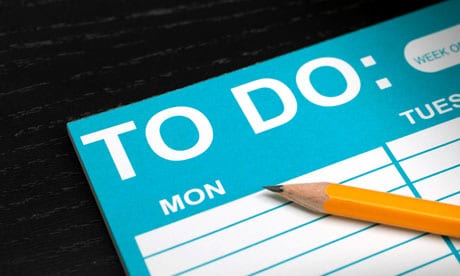

5. Break Tasks into Smaller Steps
Large projects can feel overwhelming, leading to procrastination. Break them into smaller, manageable steps to make them feel more achievable.
6. Eliminate Distractions
Identify and minimize distractions in your workspace. This could mean turning off notifications, creating a clutter-free environment, or using website blockers during work hours.

7. Use Time Management Techniques
Employ techniques like the Pomodoro Technique, where you work for a focused period (e.g., 25 minutes) and then take a short break. This can enhance your concentration and productivity.
8. Reward Yourself
Set up rewards for completing tasks or reaching milestones. Treat yourself to something enjoyable after accomplishing your work, which can reinforce positive behaviour.
9. Visualize Success
Imagine the satisfaction and benefits of achieving your goals. Visualizing success can help you maintain focus and motivation.
10. Stay Accountable
Share your goals with a friend, family member, or colleague who can hold you accountable. Knowing that someone else is aware of your goals can help you stay motivated.
11. Seek Inspiration
Surround yourself with motivational content, books, podcasts, or videos that inspire you to stay productive and motivated. Post inspirational sayings in your work area.
12. Stay Healthy
Prioritize your physical and mental well-being. Regular exercise, a balanced diet, and sufficient sleep can significantly impact your energy levels and motivation.
13. Reflect on Your Summer
Take some time to reflect on what you enjoyed during the summer and how you can integrate those positive aspects into your daily routine. This can make the transition smoother.
14. Adapt and Adjust
Be flexible with your approach. If you find that certain strategies are not working, be open to trying different methods until you find what works best for you.
Remember that motivation can fluctuate, so it’s essential to be patient with yourself. The key is to take consistent steps toward your goals and establish habits that support your productivity over the long term.
Do you feel burnt out after the summer? What do you do to re-energize?




Contact her at julie@mindoverclutter.ca
Click here to learn more about her online course Create an Organized Home.
Twitter – Facebook – Facebook group Organizing Mind and Space
Click here to learn more about working with a Professional Organizer.
